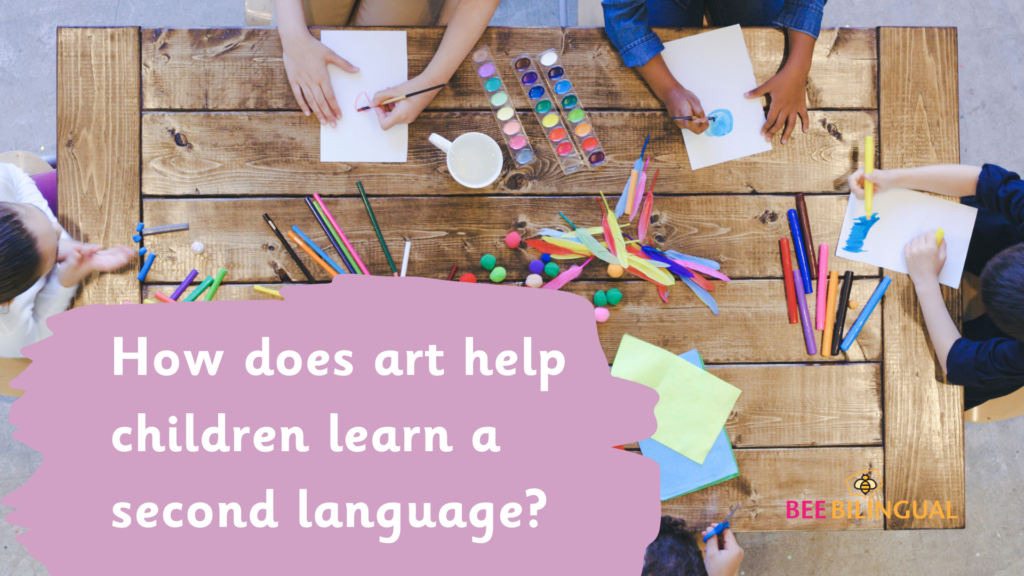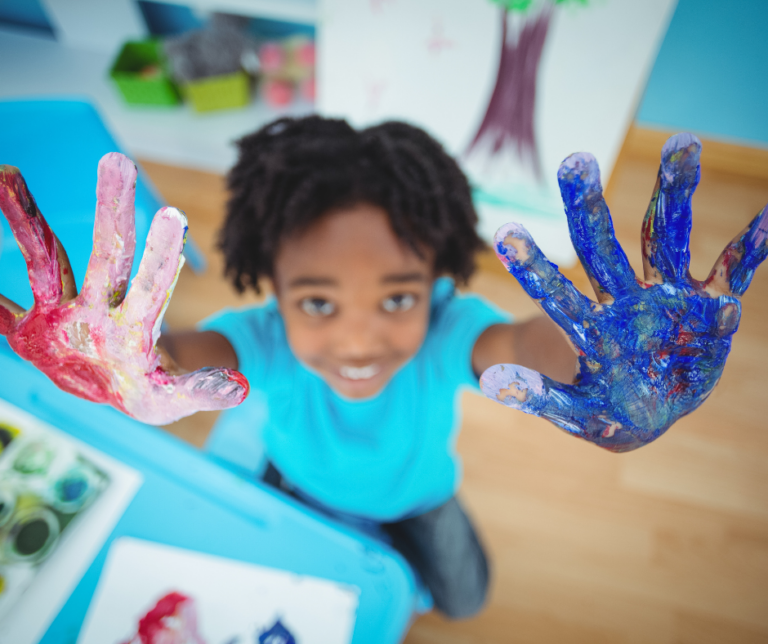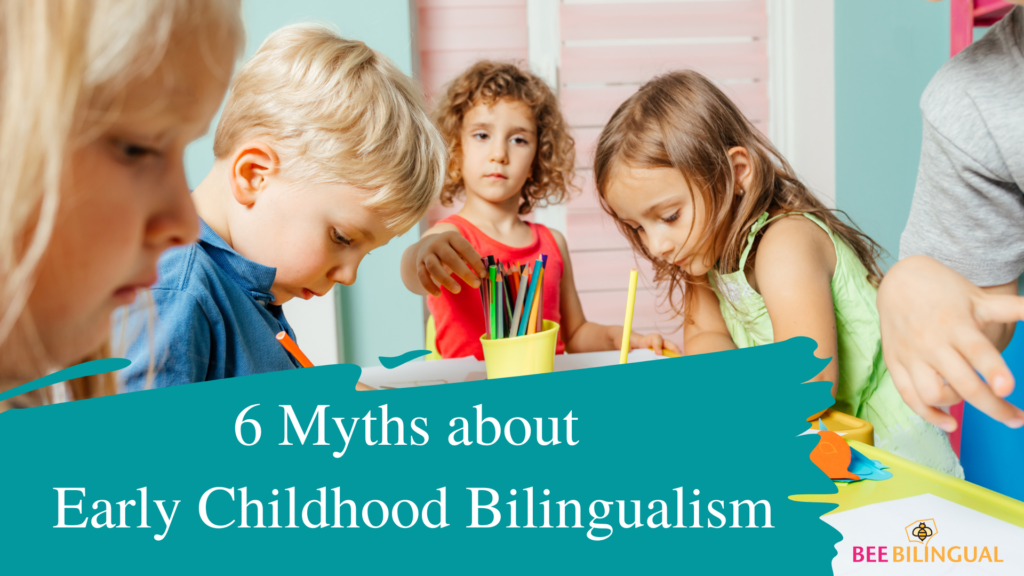Art can be a fantastic tool to enhance a child’s second language learning journey. Visuals can help kids understand new words and concepts. In second language learning, art can be used to introduce new vocabulary such as colours and shapes. It can be used to explain new structures, and it can help create interesting conversations and discussions in which children can use their newly learned or ‘old’ sentences. Art and craft activities are also great for ‘unplanned’ second language usage; children often have to come up with ways to explain their art and might need to use phrases or words that they haven’t used before.
Furthermore, independent of second language learning, art can promote children’s imagination and creativity. So as you can see, art is powerful in many ways.
Of course, artistic activities shouldn’t be used as the only tool in language lessons; in every lesson or home activity in which the second or home language is promoted, balance is key! You have to create reasons for conversations and language exchange by, for example, additionally using games, songs, and role-playing activities.
What is art? What are art and craft activities?
Art and arts and crafts are the same thing to me. You use your creativity to create something new, whether you are using play dough, paint, or pencils. It doesn’t matter! Even cutting-and-pasting activities can be seen as crafts; again, creative thinking is involved.
What is important is that the second language learning activity is linked to some kind of theme (spring, Easter, summer, animals, etc.) and promotes new second language concepts.
Benefits of Art in Second Language Teaching
Here are the benefits of art in second language teaching and home activities:
– New concepts, vocabulary, and sentences can be introduced.
– Visuals help kids (and adults) remember new words.
– Unplanned language usage; ‘old’ phrases and words can be used and practised
– Promote interactions and conversations; children can practise their second language knowledge.
– Fun!
Fun is incredibly important when it comes to language learning, and arts and crafts can be a
a great way to make language lessons or language learning activities at home more enjoyable.
As mentioned above, arts and crafts activities also promote:
– creativity
– imagination
…and of course,
– social skills (sharing, for example).
– fine motor skills
How to create an art and craft activity for your language lesson
One of the most crucial elements of a successful arts and crafts session in second language learning is being prepared. All required tools should be available to the kids. Don’t forget to have some kind of concept; there needs to be a theme or goal for the little ones. Sometimes it is also useful for children to see what the finished ‘product’ could look like. It will also motivate them and help them to visualise what their end product should look like.
It is also advisable to introduce words and concepts before you start the art and craft activity. You could do this with a game, a book, or a song!
During your activity, it is important to create opportunities for conversation. Ask lots of questions! Don’t forget that art and craft activities in second language lessons are integrated to promote children’s second language learning; it is not so much about the finished product or artistic techniques.
You could create opportunities for second language usage by asking them what they need to create their picture, for example. Such a conversation could look like this:
“What do you need?” – “I need glue.”
“What else do you need?” – “I need scissors and paint.”
Art and craft sessions are also a great opportunity to include roleplay. For example, if the session is about zoo animals, the roleplay activity could involve going to the zoo and asking each other for directions, for example, “Where are the monkeys?” and “Where are the zebras?”
So, yes, language games really can enhance an art and craft activity, especially if very young children are involved.
Age-appropritate Activities
Before you start planning your art and craft activity, it is essential to consider your children’s age. Very young kids find it difficult to sit still for a long time, so why not add a little roleplay activity? Think about what the goal of the activity should be. Is it about understanding new elements or using old concepts?
Here are some basic art and craft ideas for your language learning activity:
– Mini vocabulary book
– Create your own jigsaw puzzle
– Create your own domino game
– Create your own flashcards
– Create a picture book story (or comic book with lots of dialogue).
These are just a few ideas; you can check out our Language Learning Activities section for more inspiration.



